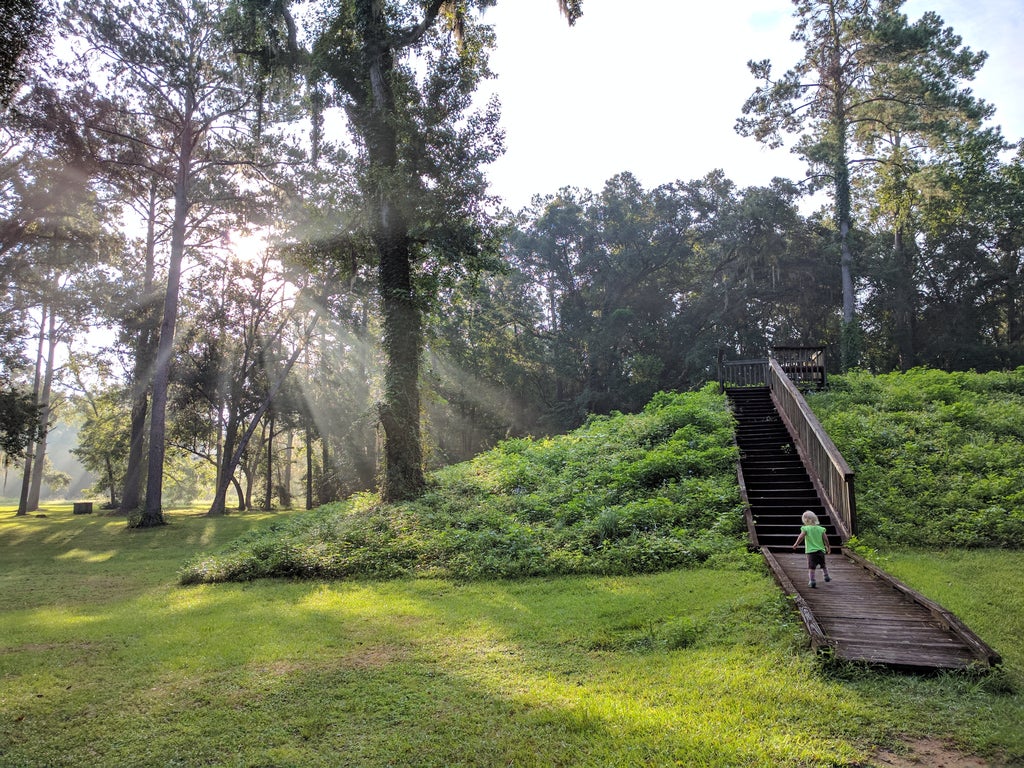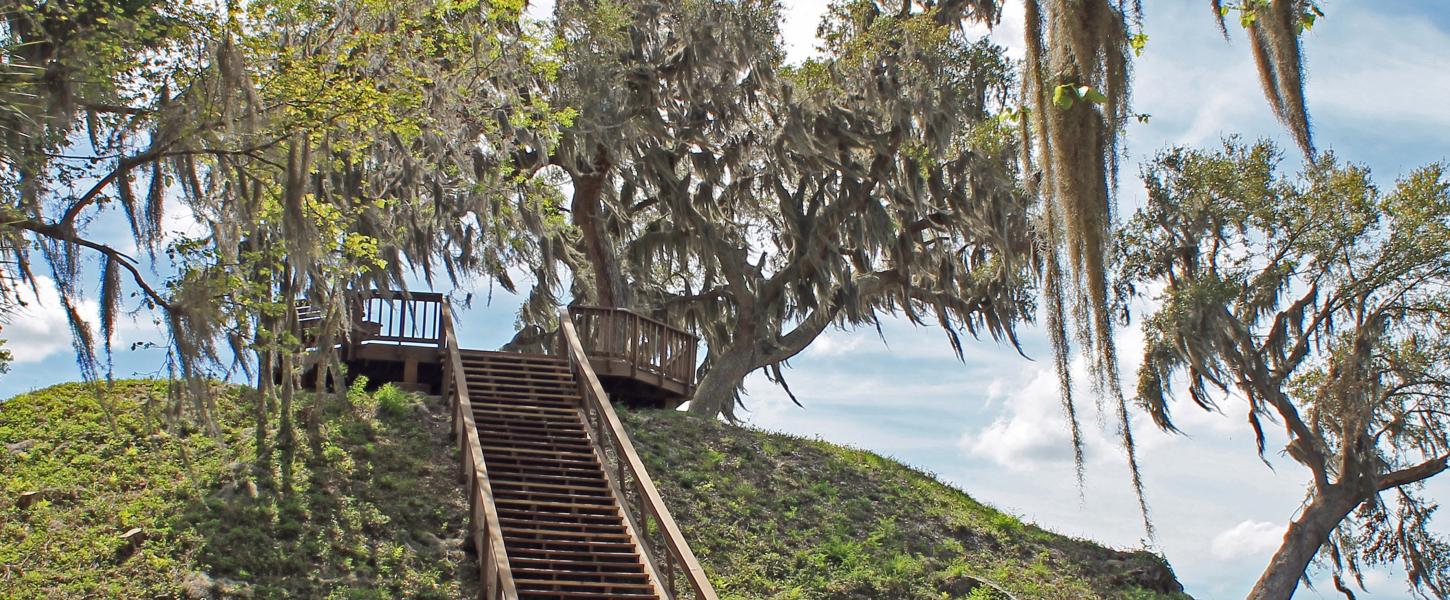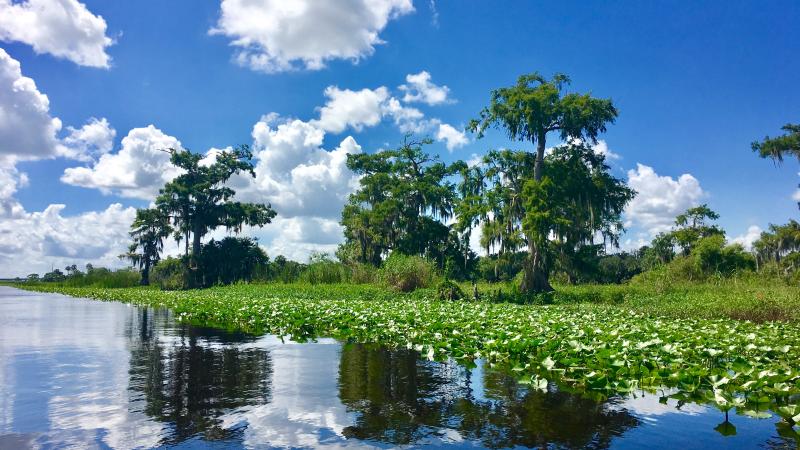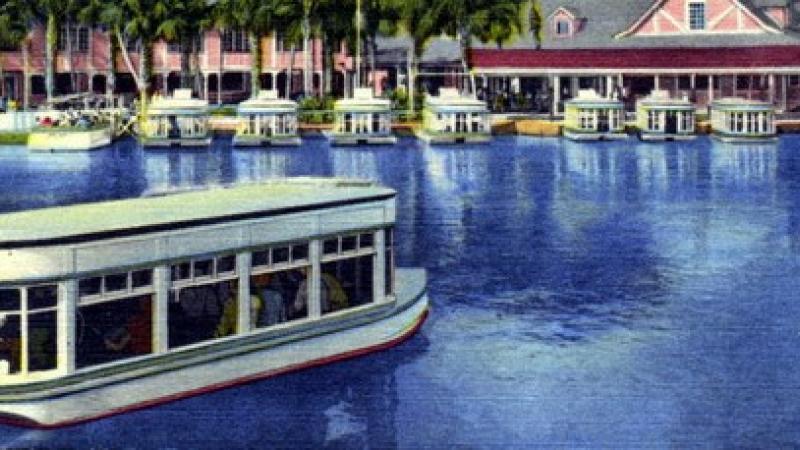
Dig Deep Into Archaeology in State Parks

Do you ever think about what’s under your feet? Archaeologists do!
Most of what we know about Florida’s long inhabitation by Native Americans comes from the work of archaeologists who carefully uncover buried or hidden artifacts. Florida State Parks protect this archaic evidence and tell the story of the state’s past.
The first Floridians settled at least 12,000 years ago in areas where a steady water supply, good stone resources for tool making, and firewood were available. Over the centuries, these native people developed complex cultures. Native societies of the peninsula developed agriculture, traded with other groups in what is now the southeastern United States, and increased their social organization, reflected in large temple mounds and villages.
State parks with exceptional archaeological features such as temple mounds are often designated archaeological state parks. For example, Lake Jackson Mounds Archaeological State Park in Tallahassee protects two of the largest ceremonial mound structures in the state. Besides being a valuable resource for researchers, protecting mounds and other archaeological resources helps us connect with the past. When we can see the evidence, it’s easier to imagine the people who lived here.
There are six designated archaeological state parks, although many other parks protect places significant to Florida’s history and prehistory.

- Lake Jackson Mounds Archaeological State Park – This park protects six earthen temple mounds built by the Mississippian Native American culture. A trail through the forest leads to an early pioneer mill site on a gently flowing creek.
- Letchworth-Love Mounds Archaeological State Park – See Florida’s tallest Native American ceremonial mound, built more than 1,000 years ago by a complex civilization. The park offers picnicking, birding and hiking.
- Crystal River Archaeological State Park – The six-mound complex is one of the longest continuously occupied sites in Florida. For 1,600 years the site served as an important ceremonial center for Native Americans. People traveled to the complex from great distances to bury their dead and conduct trade.
- Madira Bickel Mound State Archaeological Site – This ancient Native American site was the first in Florida to be protected as a State Archaeological Site. Excavations have revealed habitation by three distinct cultures dating back 2,000 years.
- Mound Key Archaeological State Park – Framed by mangrove forests, the shell mounds and ridges of Mound Key rise more than 30 feet above the calm waters of Estero Bay. Mound Key is believed to have been the capital town of the Calusa people.
- San Pedro Underwater Archaeological State Park – Part of a Spanish flotilla, the San Pedro was a 287-ton ship that sank in a hurricane on July 13, 1733. The remains were discovered in 1960 and the offshore site is now open to divers and snorkelers.
State park archaeological sites are managed to protect them from natural and human threats. Natural processes that can damage archaeological resources include erosion, and human activities such as construction or looting can also threaten these sites. Park staff are trained to recognize the different types of archaeological sites in their parks and work with partners like the Florida Department of State’s Division of Historical Resources and the Florida Public Archaeology Network to preserve them.
Experience Florida history and culture in state parks
This article was published in the Real Florida ℠ Connection, the Florida State Parks e-newsletter. Sign-up to get updates and stories from your state parks the first week of every month.


